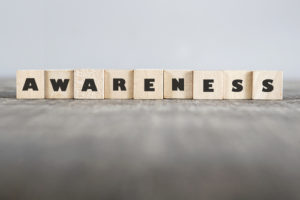 We don’t know what we don’t know.
We don’t know what we don’t know.
Truer words were never spoken for meetings and presentations in which the participants have never met or don’t know each other well. Call it a mindset, a motto, or simply an awareness, but it would be wise to adopt and internalize the words, “we don’t know what we don’t know.”
In response to feedback from readers after my last post, I am continuing to address implicit bias and racism in the conference room. In particular, I want to address microaggressions – what they are, how they make people feel, and how easy they are to commit unless we make every effort to err on the side of sensitivity.
Because the word “aggression” has connotations of asserting strength or power through intention, there may be some misconception about what the term “microaggression” means. An Oxford Dictionary definition describes a microaggression as “a statement, action, or incident regarded as an instance of indirect, subtle, or unintentional discrimination against members of a marginalized group such as a racial or ethnic minority.”
For our purposes here, I want to talk about microaggressions in our communications and use an example of my own offense in this regard. To that end, I need to share feedback I received recently from a woman of color who had attended one of my trainings six months ago:
She asked me if I remembered a certain story I told in which the main character was a young man from Sudan who stood out (in a Starbucks in the middle of Utah) because he was just under 7 feet tall and very dark-skinned. I remembered the story. She said she knew the story had a relevant point but, for the life of her, she couldn’t remember the point or anything else. Her brain was overtaken and paralyzed by my description of him. She said she had no reason to think my intentions were bad or racially motivated. Rather, her experiences in life had conditioned her to freeze in anticipation of the worst. A person of color listening to a white person telling a story that included mention of skin color made her feel singled-out, almost threatened, in the room. This, much to my regret, was a microaggression.
As she and I talked, I realized how little it takes to make people feel othered or even threatened. She admitted that, even while she knew the story and storyteller didn’t have racial motivations, she still froze, bracing for what a lifetime of intended and unintended offenses had prepared her for. For my part, I was contrite, full of regret, remorse, guilt, you name it.
I learned a good lesson, though, which is what I’m sharing today: Especially in rooms where I don’t know people well, and even where I do, I plan to err on the side of sensitivity. I will approach all interactions with heightened sensitivity and awareness. I will look at the faces of the people I’m communicating with and not assume anything. I will refrain from the use of examples that single out race, religion or ethnicity, and strive to tell stories that will resonate with everyone in the room. I will seek to provide context to my examples and storytelling in a way that could apply universally to anyone in the room. I think we all can do that.
After all, we don’t know what we don’t know.
- New Agey Advice for Nervousness - November 3, 2022
- Your Passion Can Go a Long Way Toward Building Connection - October 10, 2022
- Keep stage fright a private matter while you’re speaking on a public stage! - August 11, 2022



